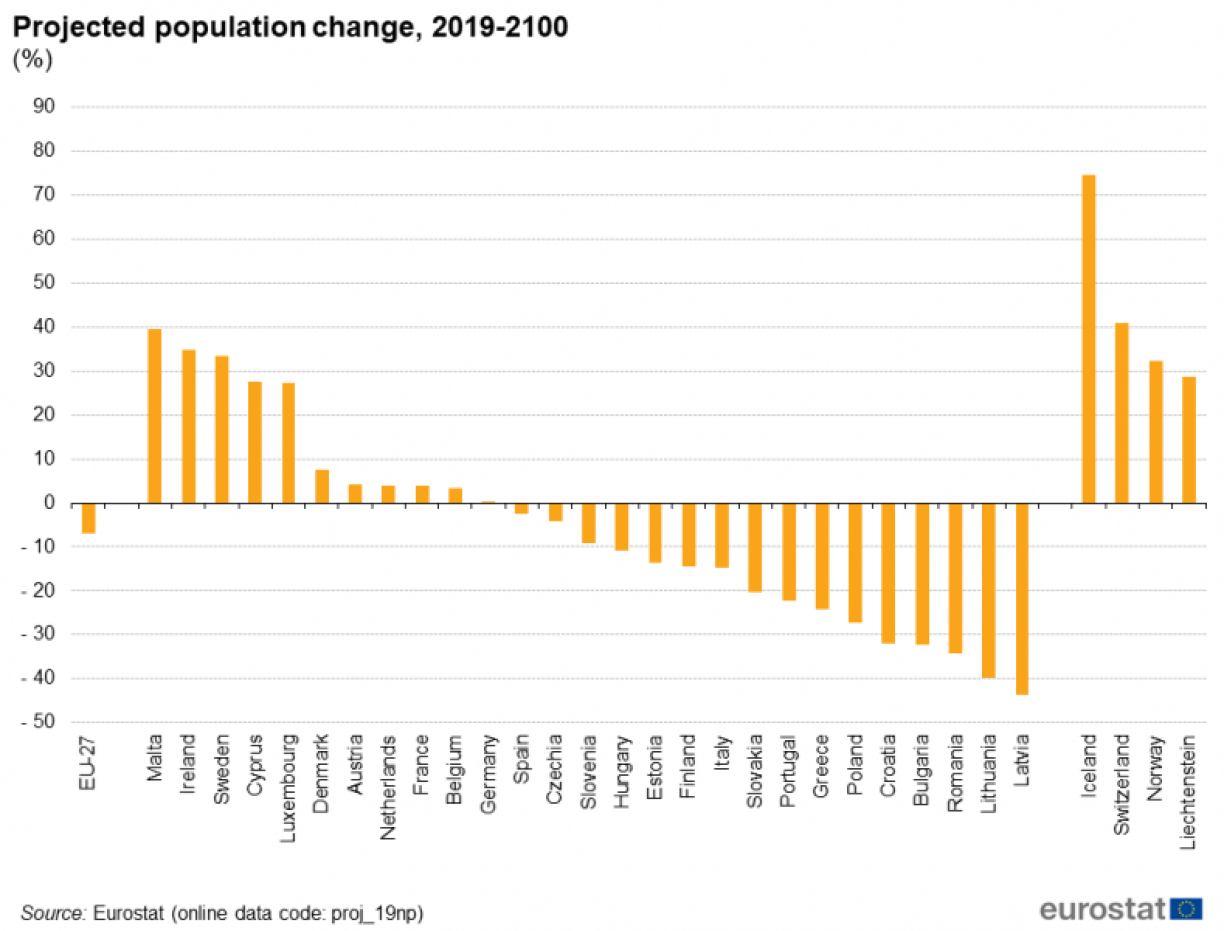
A new Eurostat study projects the EU’s population to fall by 30.8 million people by 2100 due to a combination of fewer births and an ageing population, highlighting challenges for public expenditure in relation to pensions and health care.
Specifically, the EU’s population is projected to increase from 446.8 million in 2019 and peak at 449.3 million in 2026 (+0.6 %), then gradually decrease to 441.2 million in 2050 and to 416.1 million in 2100 - an overall decline of 6.9%.
Meanwhile, the number of people over 80 is projected to rise by 14%. The median age of the whole population will increase by 5.1 years.
Analysts do underline however that these projections are very long term, and should be taken with caution. But they do highlight the challenges countries will be facing with a greying population.
11 EU countries will in fact see a population increase, including Luxembourg. The Grand Duchy’s population is expected to rise by 27% between 2019 and 2100, Eurostat data shows.
This places Luxembourg alongside Malta (+39.7%), Ireland (+34.8%), Sweden (33.5%) and Cyprus (27.7%) as the EU countries with the highest net increases.
Many of these countries are seeing positive net migration (people from abroad accepting jobs in these countries, moving there, starting families) and this slows down a country’s ageing trajectory.
The biggest population decreases are projected to be seen in Latvia (-43%) and above 30% in Croatia, Bulgaria, Romania and Lithuania. The ‘brain drain’ factor plays a key role here too, with young people moving for jobs abroad.

The EU’s inhabitants are getting older. The median age is expected to increase by 5.1 years, from 43.7 years in 2019 to 48.8 years in 2100.
All age groups are seeing decreases in their share of the population, apart from the elderly above 65. The proportion of children is expected to decrease from 15.2% to 13.9%, the working-age population to drop from 64.6% to 54.8%, and those aged 65 and over to increase from 20.3% to 31.3%.
The share of people above 80 will more than double from 26 million to 60 million.

Because the working-age population will shrink considerably between 2019 and 2100, thus further increasing the burden on those of working-age to sustain the dependent population, the pension age could be raised, forcing people to work longer before retiring.
Due to lower mortality rates as a result of healthier living and better care, people live longer. While this is a positive development, it puts more strain on the healthcare system (more people will need care eventually) as well as pensions paid out.
And finally, due to ‘ageing at the bottom’ (of the population pyramid), the young population is projected to decrease. Fewer babies are born and more people are deciding not to have children at all.
By 2100 there will be fewer than two persons of working-age for each elderly person.